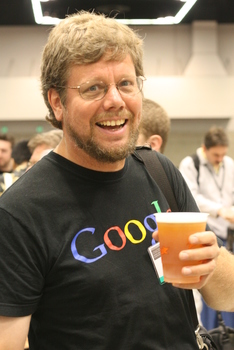Blahblah¶
The Python Programming Language¶
Interpreted
No compiler (and entire toolchain) needed
Interpreter generates intermediate byte code
Object Oriented
Classes/encapsulation, exception handling, …
But not mandatory as in Java, for example
Interactive
Python prompt ⟶ Interpreter’s interactive mode
For beginners
Simple syntax: indentation instead of explicit block markers
Consistent
“There’s only one way to do it!”
Powerful
Advanced language features: Iteration,
yield, …Huge library ⟶ “Comes with batteries included”
A Little Bit of History¶
Written and conceived by Guido Van Rossum during the late eighties
Named after Monty Python
First public release 1991 — version 0.9.0
Modern language attributes: classes, exceptions, modules, …
Version 1.5 (1997)
Major version for a longer time
- Several useful features: keyword arguments, functional programming
tools, name mangling/data hiding, …
Version 2.7 (2010)
Still backwards compatible with all previous versions
Last version of the 2.x series
Only fixes
Promised to be supported until 2020
Version 3.0 (2008)
Incompatible in subtle ways
Guido Van Rossum¶
|

|
